Home » Home Decor » Don’t Have Space for Plants? Set Up a Vertical Garden Instead
Setting up an indoor vertical garden is much easier than most people think.
Nothing adds a burst of colour and texture to a house like some well-placed indoor plants. Fresh, potted plants not only make your home look more expensive on a budget but also open up small places. They also tend to make rooms look far more spacious that they originally are.
While you can upgrade your home décor with some artificial greens, nothing beats the real thing. Apart from the fact that gardening could be an ideal way to relieve stress for some people, let’s not forget that adding indoor plants to your home or office has a positive impact on your environment as well since they reduce carbon dioxide levels, increase humidity and decrease the levels of certain pollutants in the air.
Setting up an indoor garden is perhaps the most affordable and most eco-friendly way to upgrade your house or apartment. However, don’t feel left out if you don’t have enough space to set one up.
Instead of going the traditional route and dedicating precious floor space to indoor plants, you can utilize a blank wall to grow your vertical garden.
Tips on setting up a vertical garden
Here are a few tips and tricks to design a vertical garden that will brighten up your home.
Select a wall
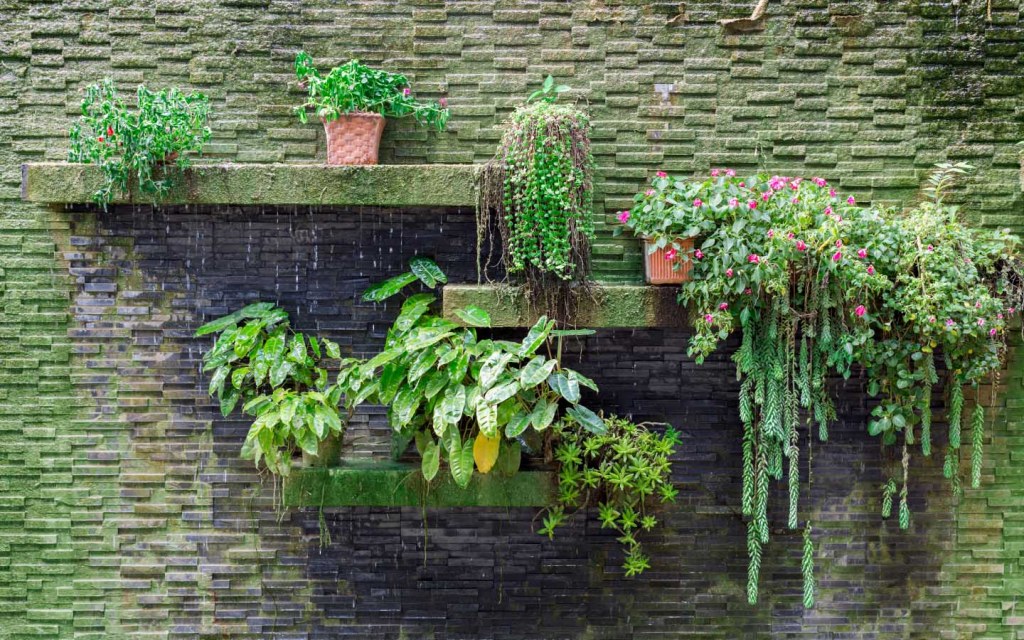
If you live in an apartment, a wall in your balcony might be the perfect spot to plant a vertical garden. However, if you don’t have that option, select a wall inside your home that receives adequate sunlight.
Keep in mind that some plants thrive in shade, so choose wisely depending on the type of plants you want to have in your garden. If you are living in a house, you can even use your porch wall or utilize your garage for this purpose. The wall next to your staircase or the space under your stairs can also be an ideal location.
Decide on the type of garden
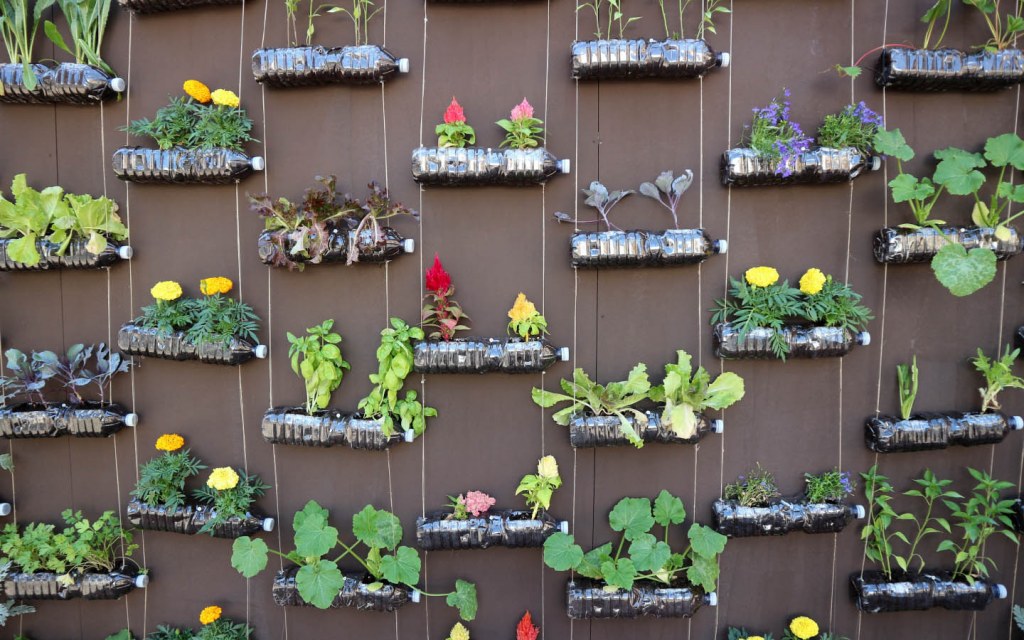
There are so many ways you can grow an indoor vertical garden.
You can spruce up your apartment balcony by vertically hanging some clay pots, spray painting some pipes or metal rods to hang some plants, opting for a trellis wall garden, creating a pocket garden by tucking plants into pockets made from canvas or felt or using an old dresser (or a chest of drawers) by filling it with potting soil and pulling out each drawer just enough to create a cascading waterfall-like effect.
You can also use recycled soda bottles by hanging them horizontally, stack some old crates, use an old ladder, repurpose an old bookshelf or even utilize a hanging shoe holder for an indoor garden.
The simplest vertical gardening idea would be to attach potted plants to a wall in neat rows. The possibilities are endless. All you need is some creative ideas and a good grasp of what you want your end product to look like.
Build a frame
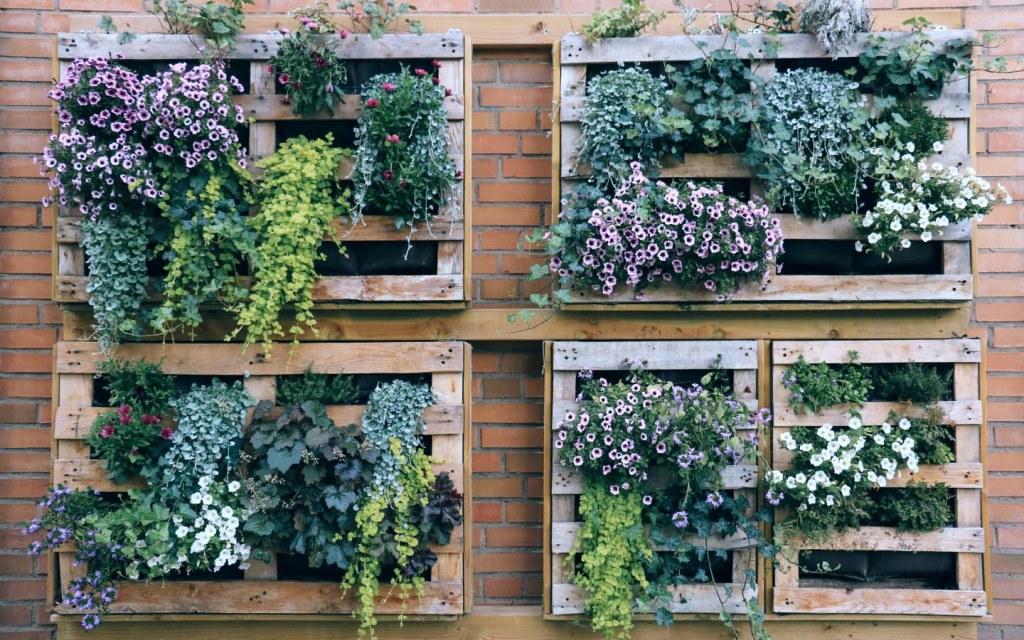
If you don’t want to hire any outside help or purchase costly pot hangers, you can easily DIY your way to build a hanging garden. Once you decide on what kind of indoor garden you want in your home, design a frame accordingly.
Depending on the kind of look you want, you can use wooden planks to start your vertical garden. To make it look more picturesque, you can use thin metal rods and pipes. You can even use a metal mesh sheet for a sleek, modern look. Just make sure to spray paint everything and coat it with varnish to protect the surface against water damage.
It’s also very important to secure the structure by either nailing it to the wall at a required angle or securing it with clips so it doesn’t fall over. In addition to that, the materials you use should be sturdy enough to support the added weight of soil and water.
Choose plants with similar habits

Choosing plants for growing a vertical garden is perhaps the biggest challenge.
The rule of thumb, according to the experts, is to choose plants with similar habits – for instance, their growth rate, sensitivity to sunlight etc. If your indoor wall garden doesn’t get a lot of direct sunlight, it might be a good idea to select succulent plants.
In addition to that, always select plants that don’t have rigid stems that would only grow upwards. For the perfect effect, choose herbs or flowers with softer stems so they can droop instead of shooting straight up. Generally, native plants tend to do better in such situations.
Visit your nearest nursery to find out which plants are most likely to thrive in your home.
Figure out the best soil for your garden
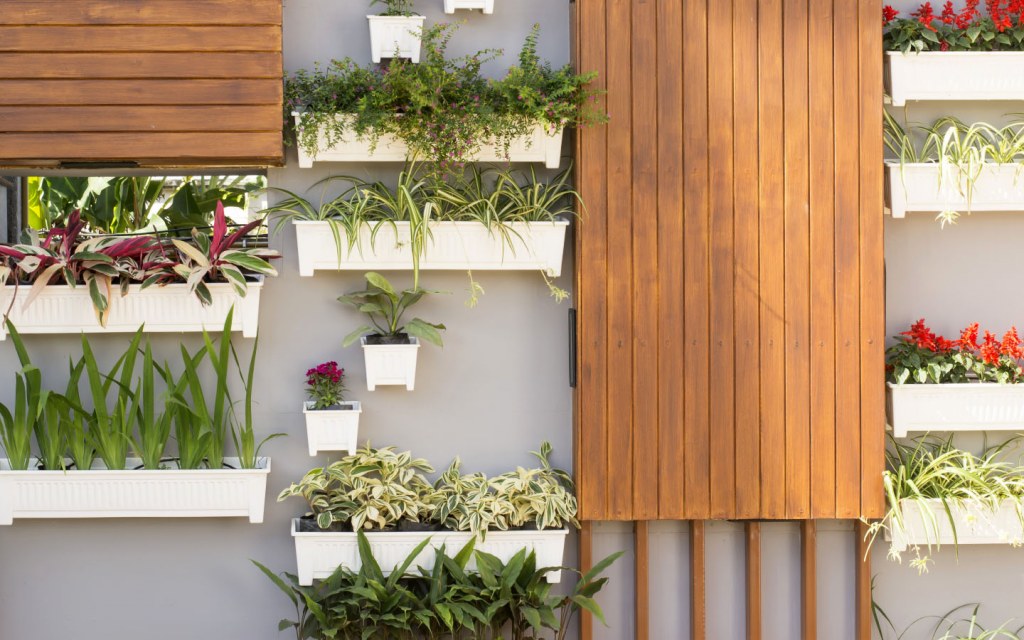
If you are just a beginner, visiting your local nursery is your best bet in figuring out which type of soil would best suit the plants you have selected and how often you would have to water them.
While widely available potting soil works fine for most indoor plants, vegetables and herbs, there are several different options available in the market. If you are growing a vertical garden inside your house or apartment, keep in mind adding compost won’t be an option. However, there are several booster fertilizers you might be able to use.
Be careful about the placement
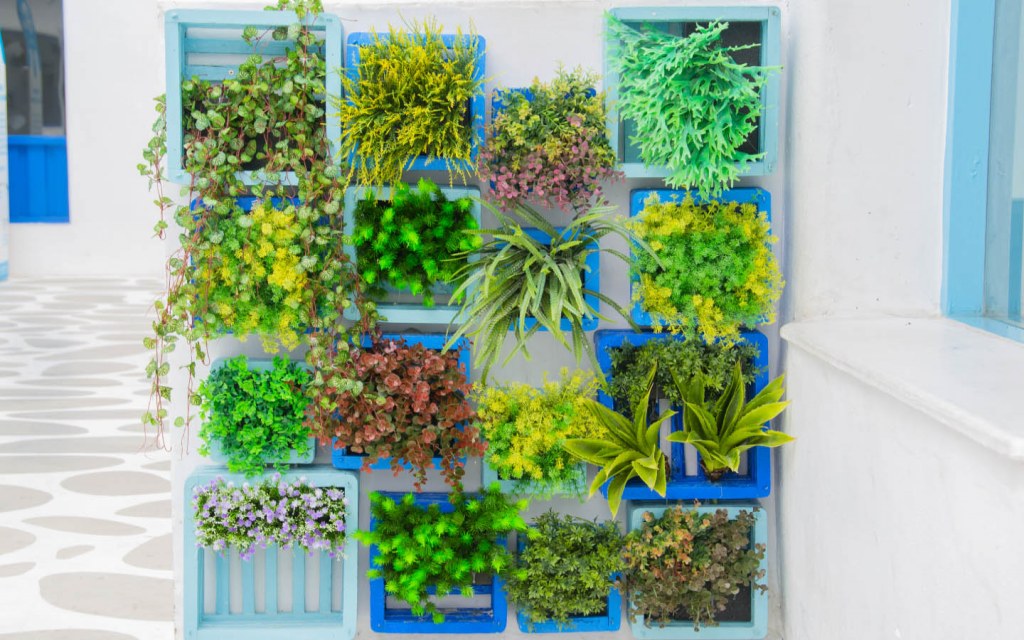
While a colour-coordinated vertical garden may look very pretty, it is not always practical. If you are considering a drip irrigation system by creating small holes in the pots or pockets, always put plants that require more water at the bottom while plants that don’t dry out too quickly should go up on the top.
Similarly, plants that will grow and droop over their pots and holders should be placed on a lower level of the garden, because if placed on the top, they’ll block other plants from the view. However, the placement factor largely depends on the design of your wall garden. Just make sure the plants at the top don’t obscure the ones below and the ones at the bottom get enough water and sunlight.
Protect the floor
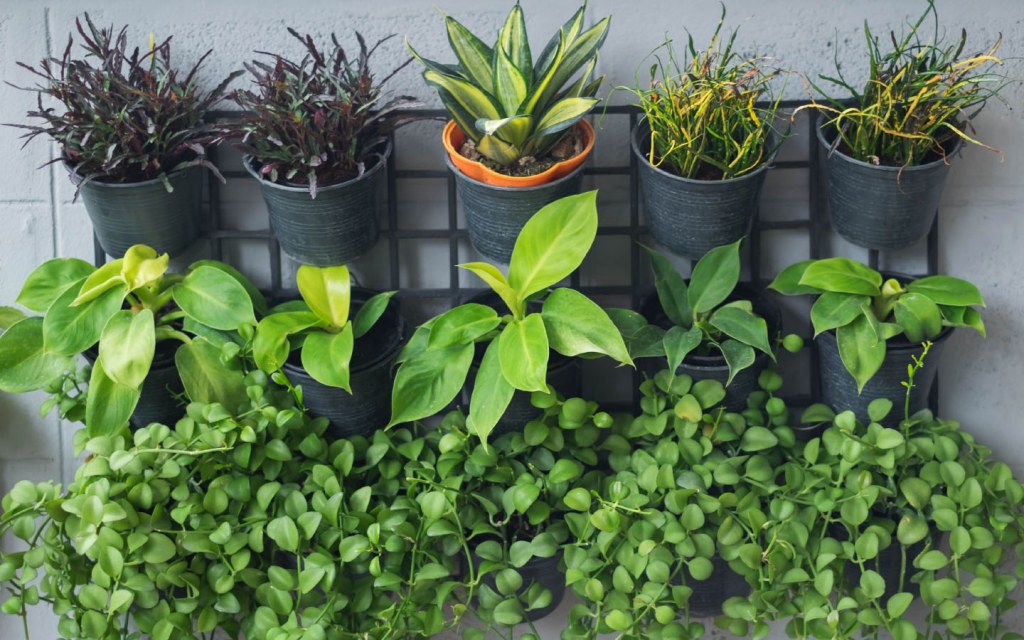
Gardening is a messy hobby – and vertical gardens are no exception at all. To avoid erosion and possible water damage, you can either place a flower bed at the bottom of your vertical garden or other potted plants so the dripping water won’t ruin your floor.
If you have wall-to-wall carpeting, you may have to think of an alternative or place a sheet of plastic right below the hanging pots to make the cleaning process easier.
Similarly, if you have hardwood floors, don’t forget a fresh coat of varnish to make sure the colour doesn’t fade and you are not left with ugly patches on the floor. If parts of your wall are also visible from behind your indoor garden wall, you might want to invest in acrylic or epoxy paint to give your wall a fresh look and reduce the damage.
Don’t ruin the aesthetic
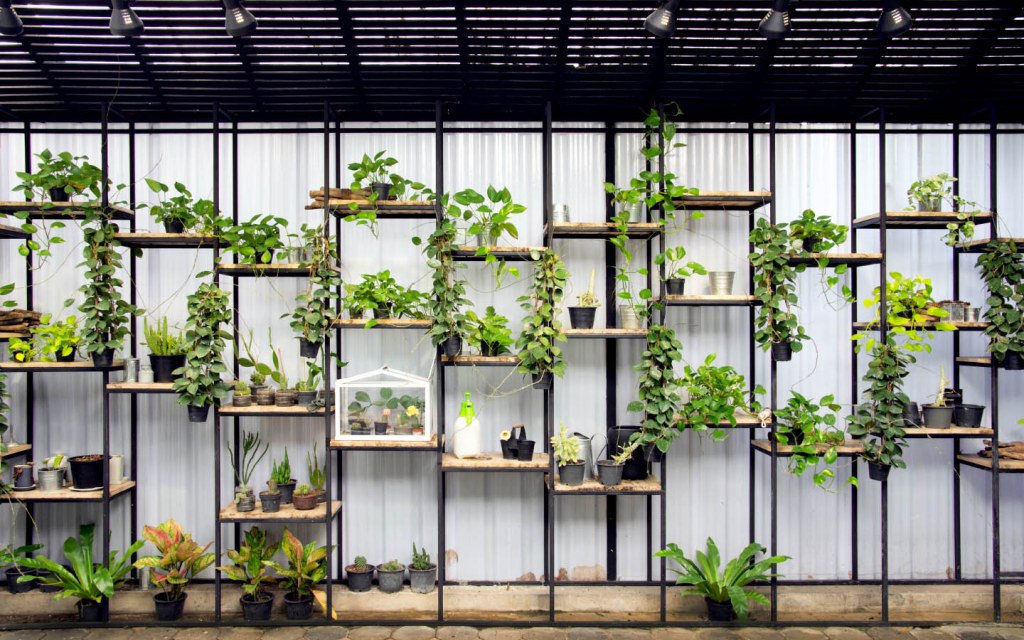
Although it’s important to be careful about colours while potting plants, you also need to accept the fact some plants will die sooner than the others.
Therefore, it is suggested you purchase some new plants – not seeds – and replace them with the wilting ones so you don’t have any empty pockets or gaps in your vertical garden.
To enhance the aesthetic appeal of your house, you’ll need to make sure the garden doesn’t look ugly or unkempt and all the plants are getting adequate water and sunlight.
Apart from planting an indoor garden, here are a few more weekend DIY projects that will help you upgrade your home decor.



